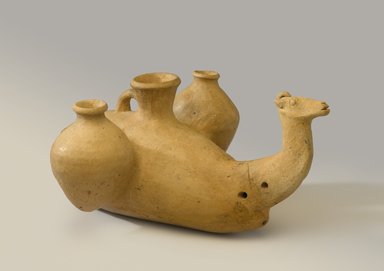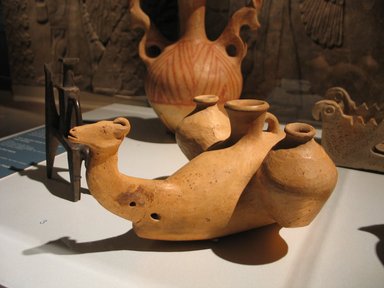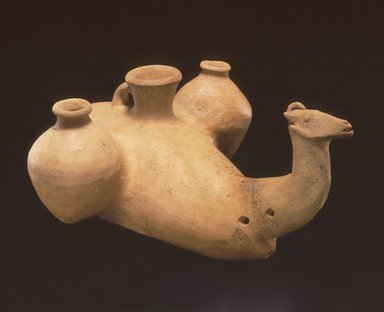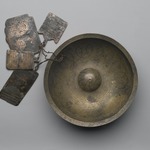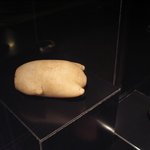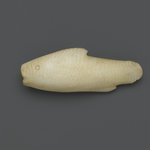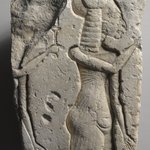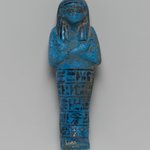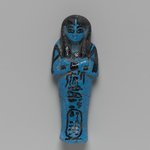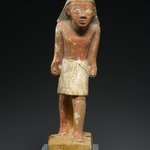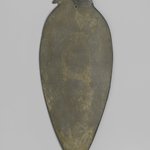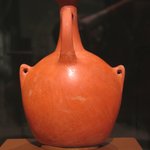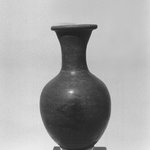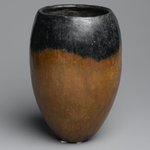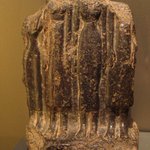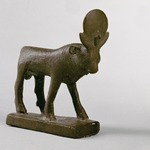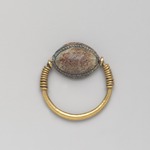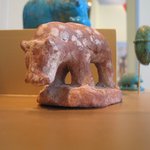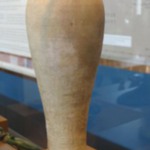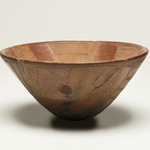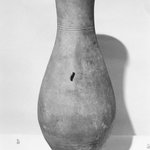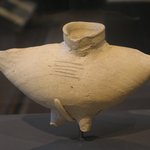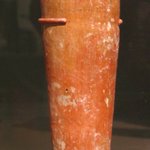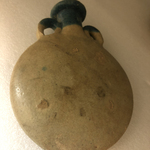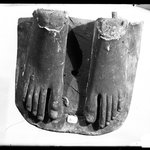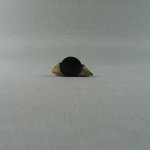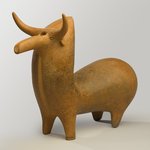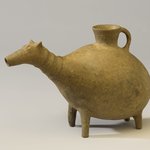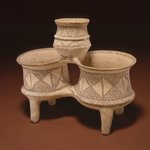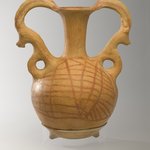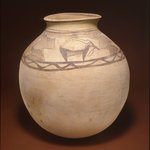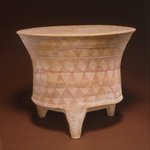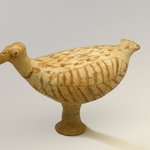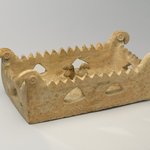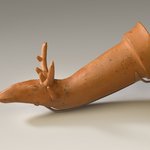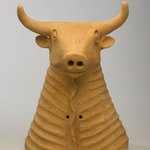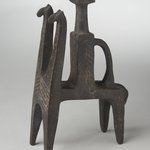Vessel in the Form of a Recumbent Camel with Jugs
Egyptian, Classical, Ancient Near Eastern Art
Ancient Iranian Ceramics
These ceramics demonstrate ancient Iranian artists’ interest in creating containers and other ritual instruments in the shape of mammals or birds. This tradition was of incredible duration, stretching back to about 3000 B.C.E. of the Neolithic period and lasting as late as the sixth century C.E. These shapes relate Iranian art to the customs of neighboring regions of Mesopotamia, Greece, and Central Asia where animal art also played an integral role.
MEDIUM
Clay
DATES
250 B.C.E.–224 C.E.
PERIOD
Parthian Period
DIMENSIONS
5 7/8 × 10 1/4 × 13 1/4 in. (15 × 26 × 33.6 cm)
Weight: 3.6 lb. (1.63kg)
(show scale)
ACCESSION NUMBER
2015.65.15
CREDIT LINE
Gift of the Arthur M. Sackler Foundation, NYC, in memory of James F. Romano
CATALOGUE DESCRIPTION
A horizontal vessel that tapers to a small nozzle above which a long neck curves forward to end in a small somewhat angular head. Small ears and a loop-like curl on top of the head enhance the alert expression conveyed by the eyes with their incised radiating lines. The nostrils and the mouth are also incised. The head and neck had broken from the body of the pot in antiquity and were reattached by thongs or wires laced through the holes bored at the base of the neck on either side of the break. A short-necked mouth with a beveled rim braced at the back by a small circular handle rises from the top of the animal's back. On each side of the vessel is an oval jar with a narrow mouth and beveled rim. A small vertical form on the round rump suggests the tail.
MUSEUM LOCATION
This item is not on view
CAPTION
Vessel in the Form of a Recumbent Camel with Jugs, 250 B.C.E.–224 C.E. Clay, 5 7/8 × 10 1/4 × 13 1/4 in. (15 × 26 × 33.6 cm). Brooklyn Museum, Gift of the Arthur M. Sackler Foundation, NYC, in memory of James F. Romano, 2015.65.15. Creative Commons-BY (Photo: Brooklyn Museum, 2015.65.15_PS9.jpg)
IMAGE
overall, 2015.65.15_PS9.jpg. Brooklyn Museum photograph, 2015
"CUR" at the beginning of an image file name means that the image was created by a curatorial staff member. These study images may be digital point-and-shoot photographs, when we don\'t yet have high-quality studio photography, or they may be scans of older negatives, slides, or photographic prints, providing historical documentation of the object.
RIGHTS STATEMENT
Creative Commons-BY
You may download and use Brooklyn Museum images of this three-dimensional work in accordance with a
Creative Commons license. Fair use, as understood under the United States Copyright Act, may also apply.
Please include caption information from this page and credit the Brooklyn Museum. If you need a high resolution file, please fill out our online
application form (charges apply).
For further information about copyright, we recommend resources at the
United States Library of Congress,
Cornell University,
Copyright and Cultural Institutions: Guidelines for U.S. Libraries, Archives, and Museums, and
Copyright Watch.
For more information about the Museum's rights project, including how rights types are assigned, please see our
blog posts on copyright.
If you have any information regarding this work and rights to it, please contact
copyright@brooklynmuseum.org.
RECORD COMPLETENESS
Not every record you will find here is complete. More information is available for some works than for others, and some entries have been updated more recently. Records are frequently reviewed and revised, and
we welcome any additional information you might have.
